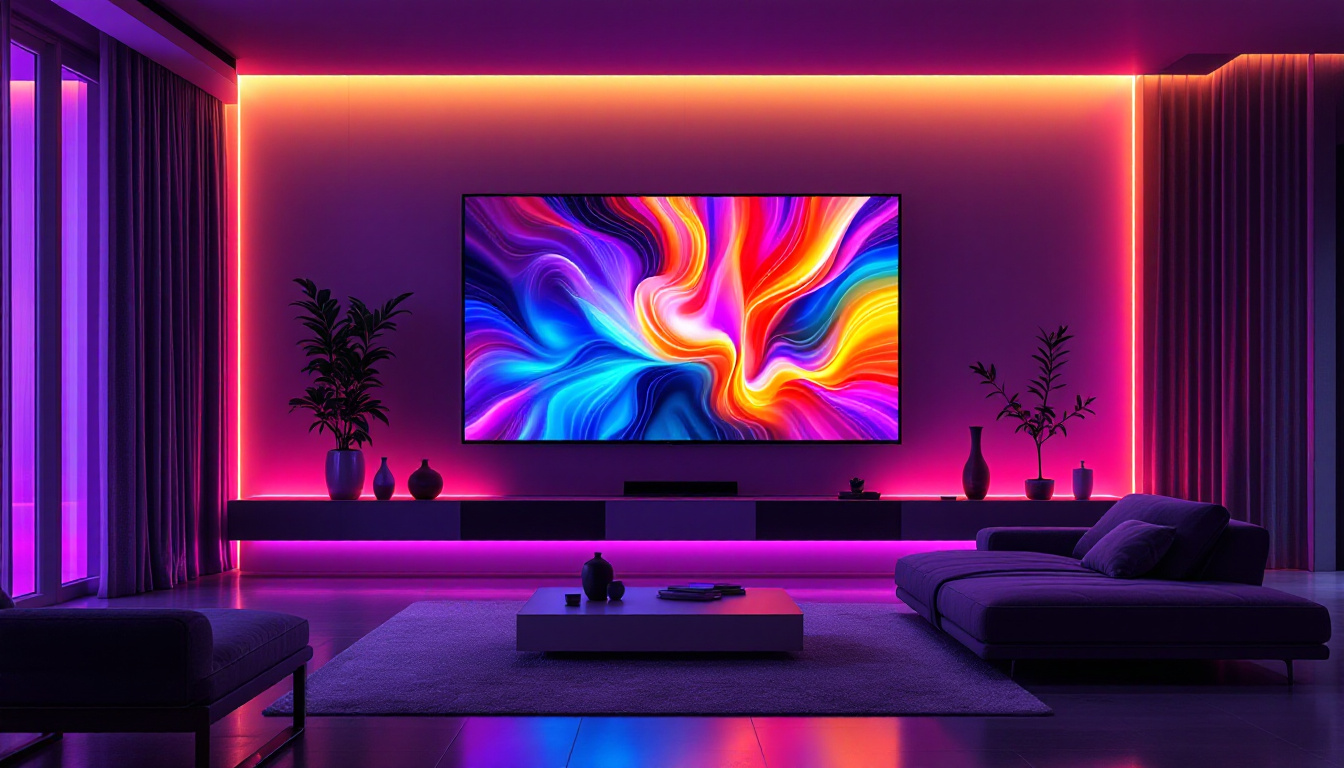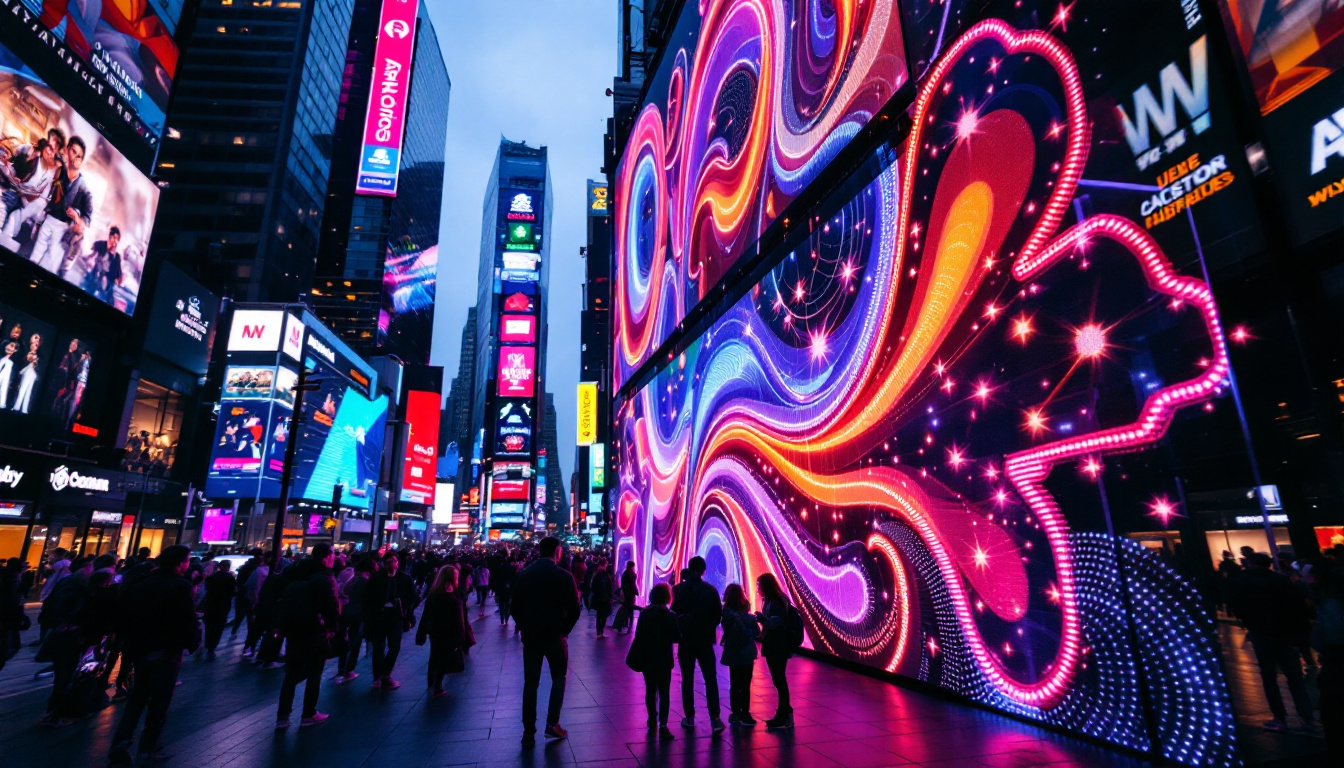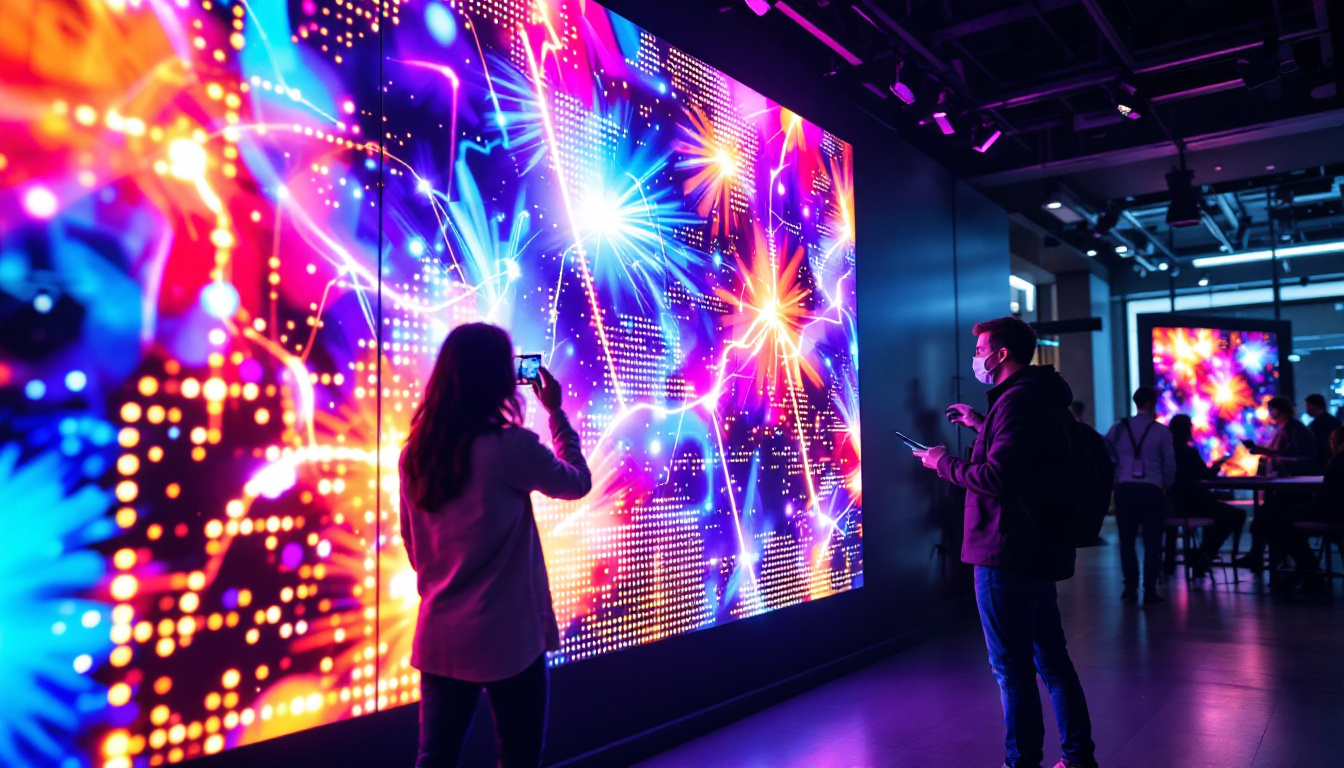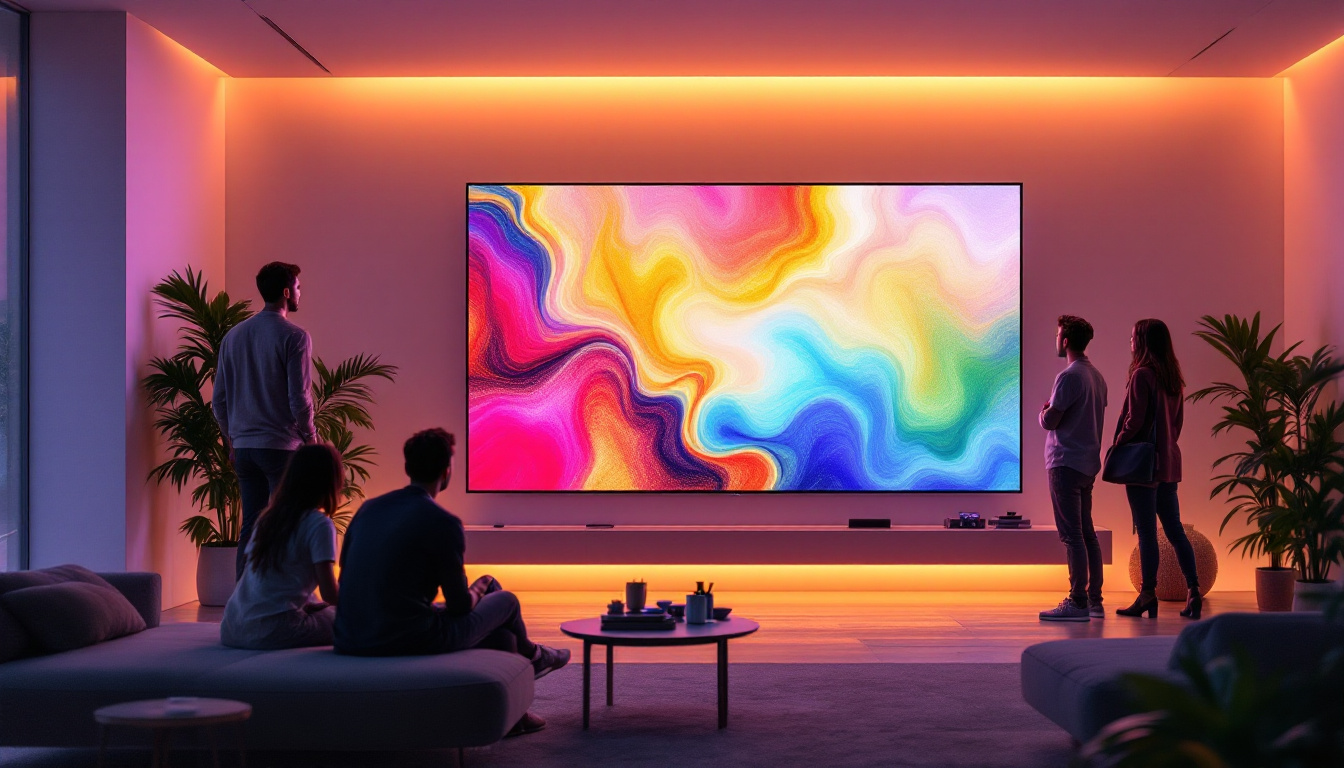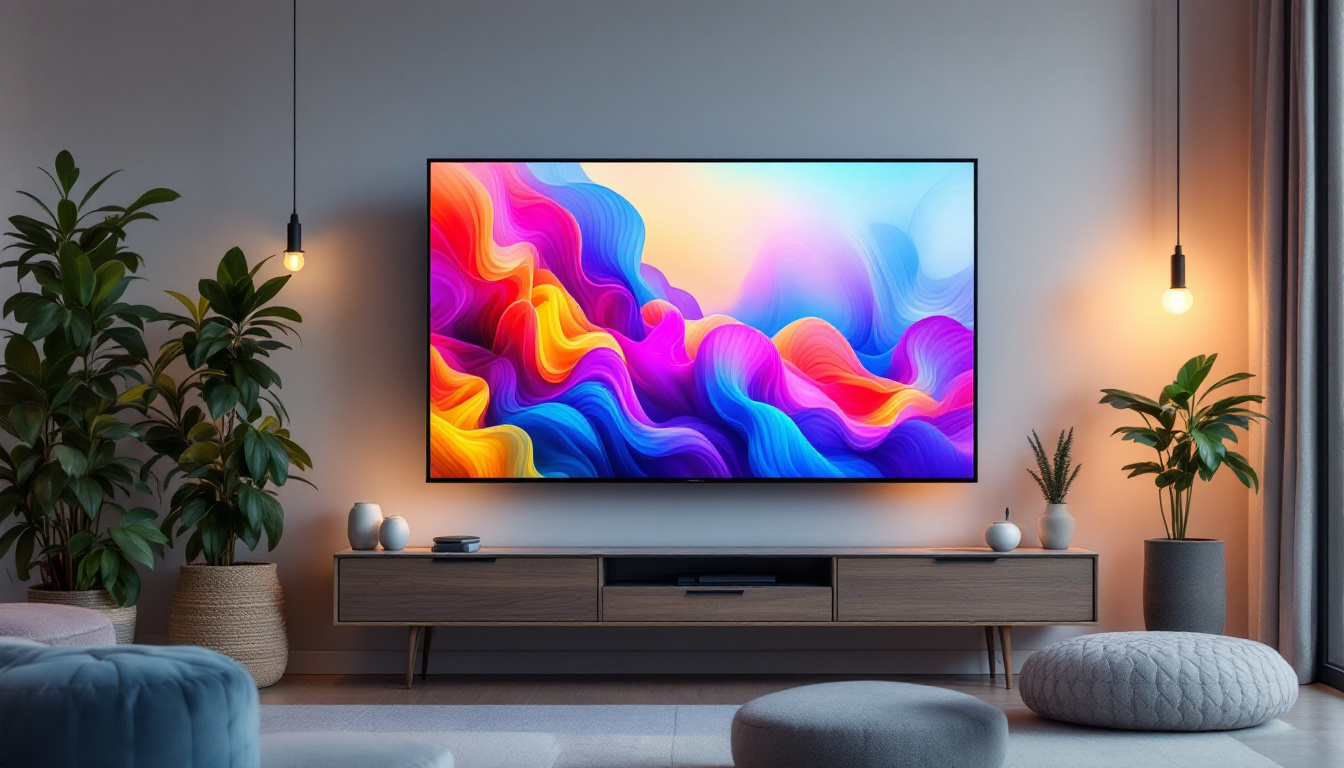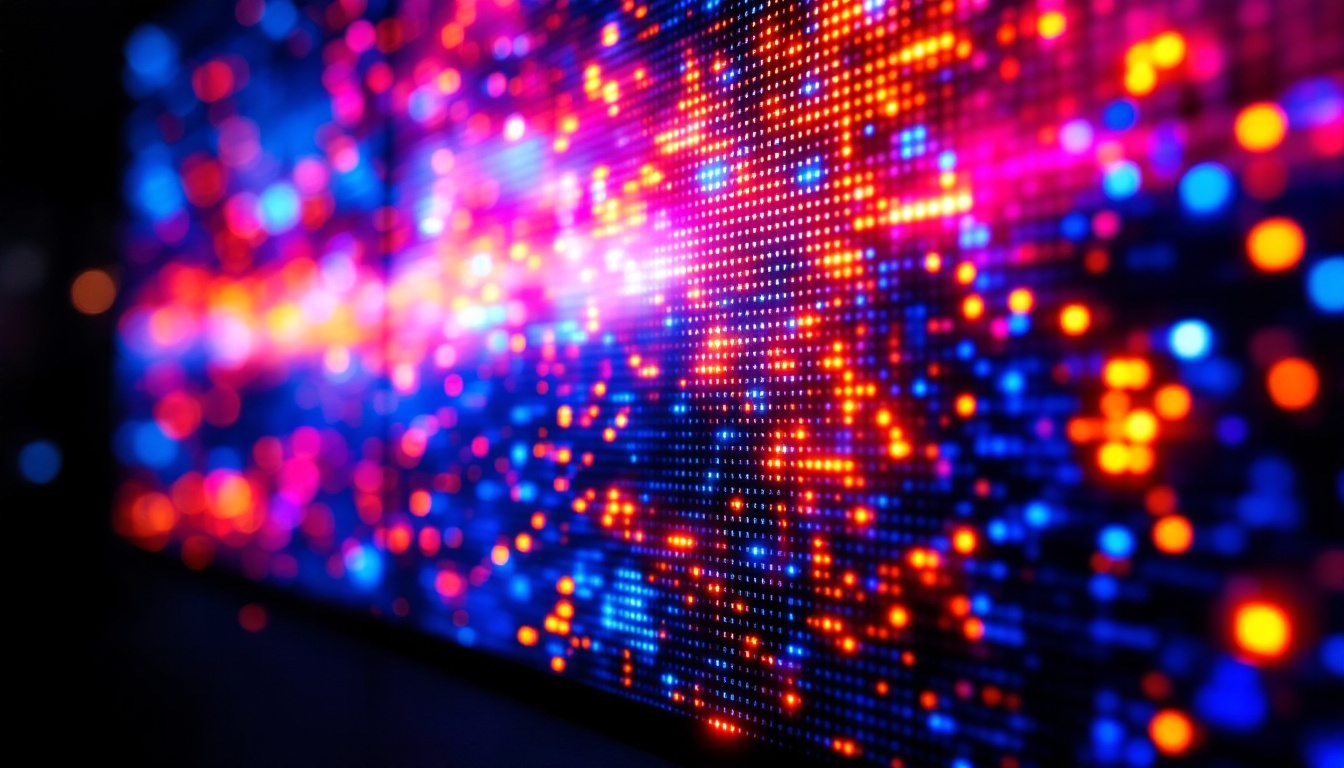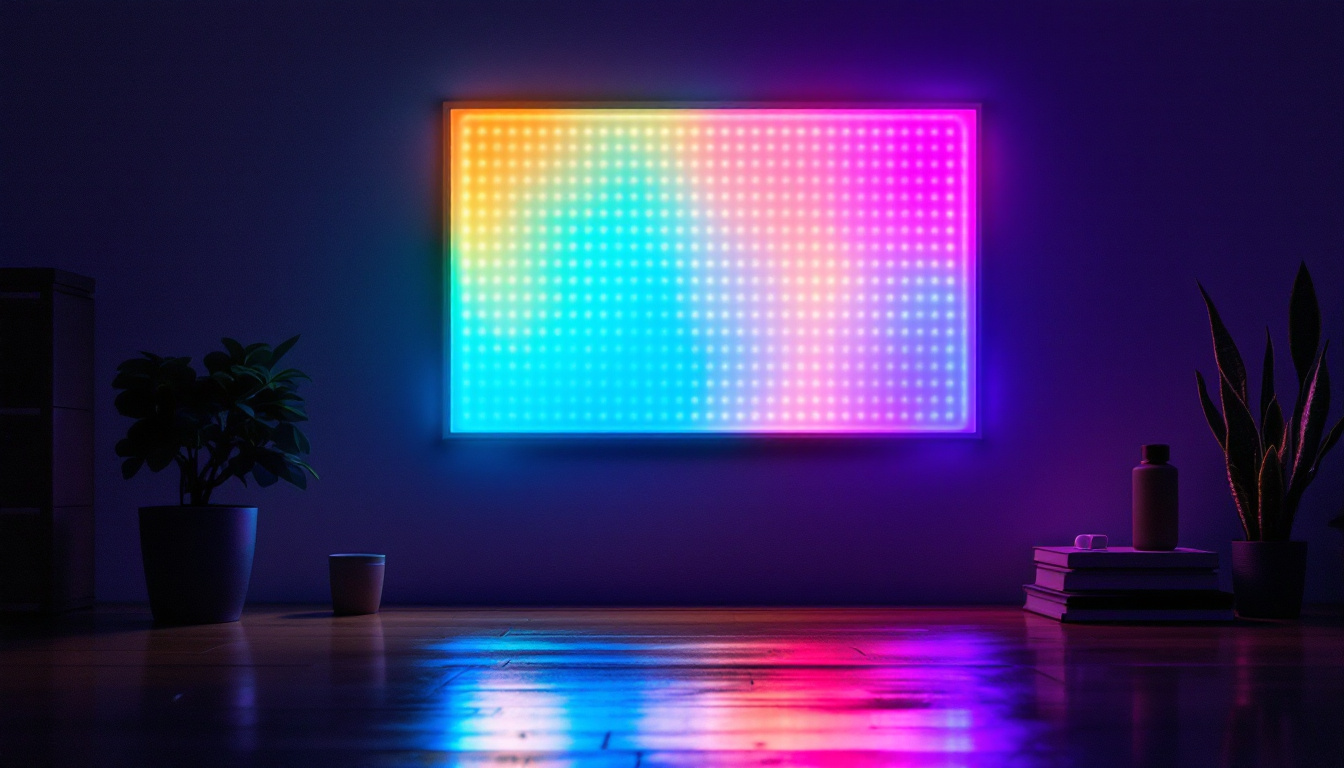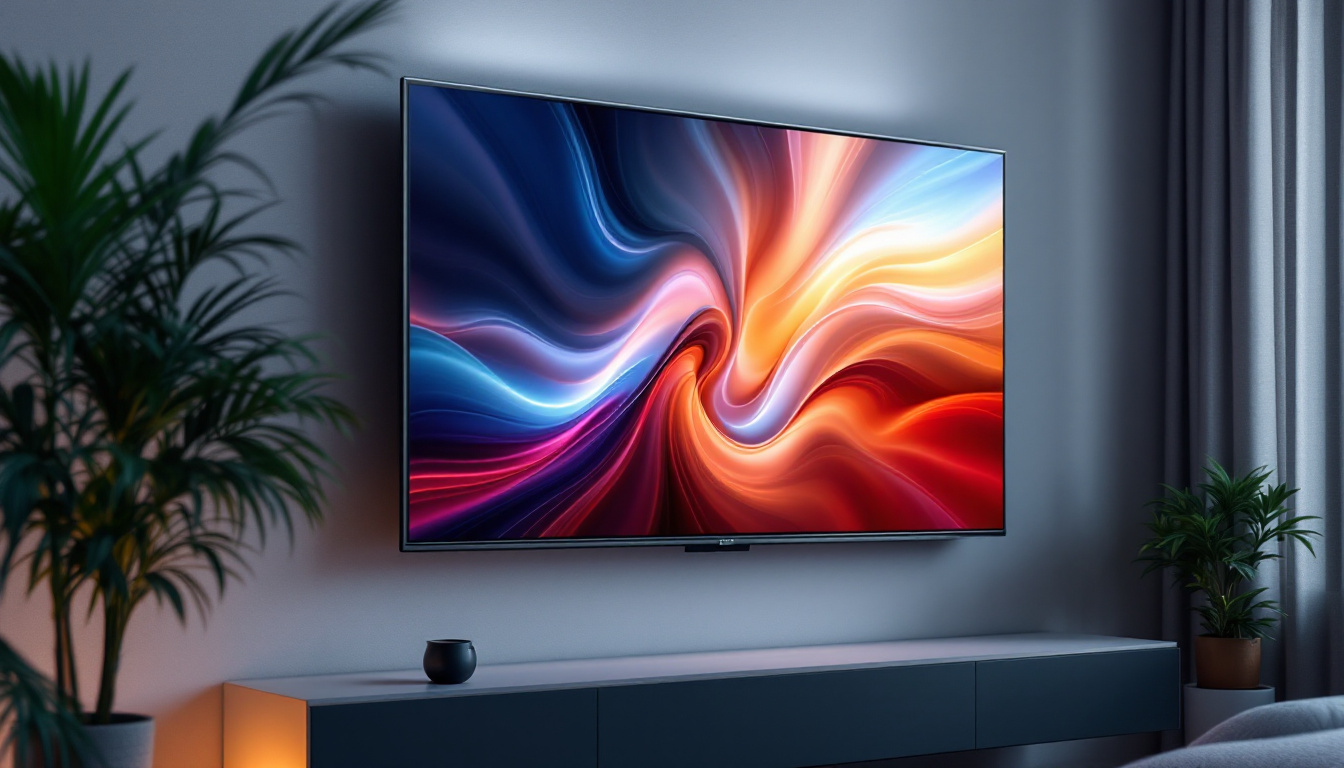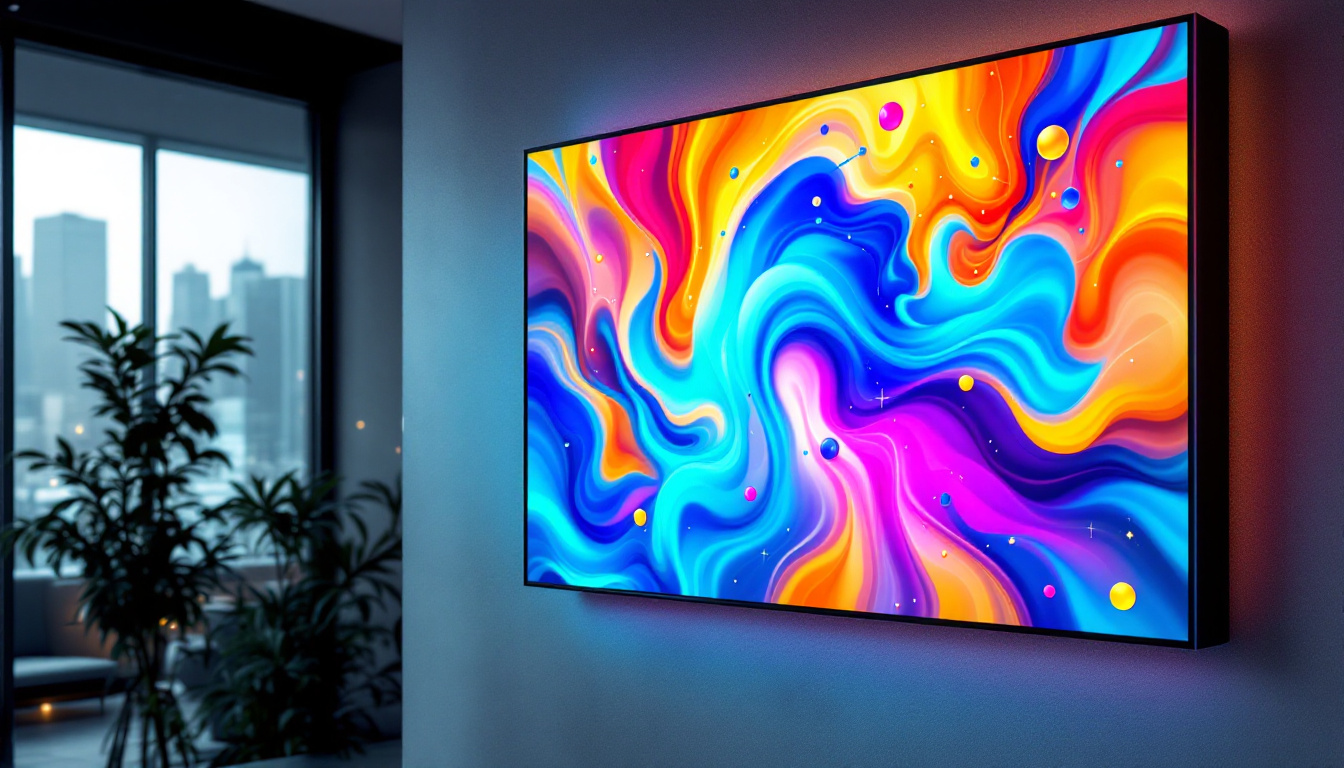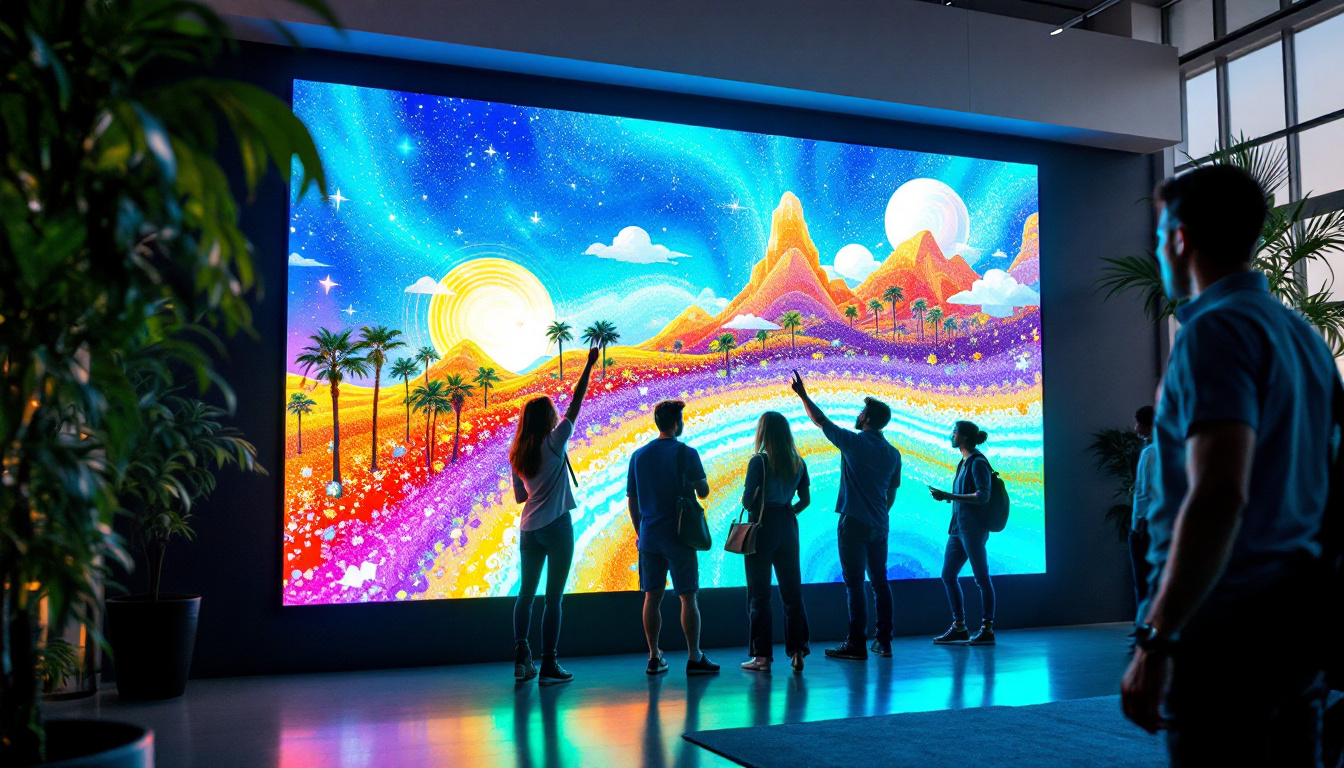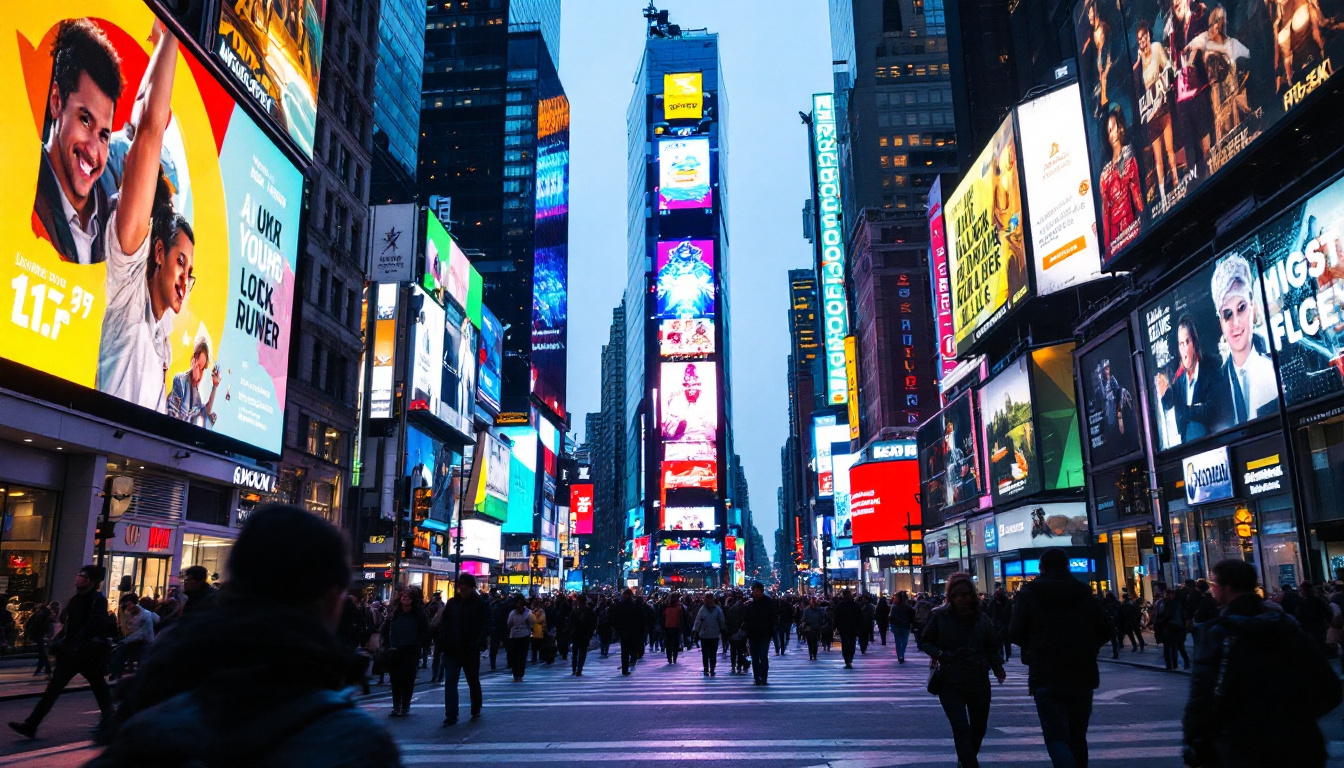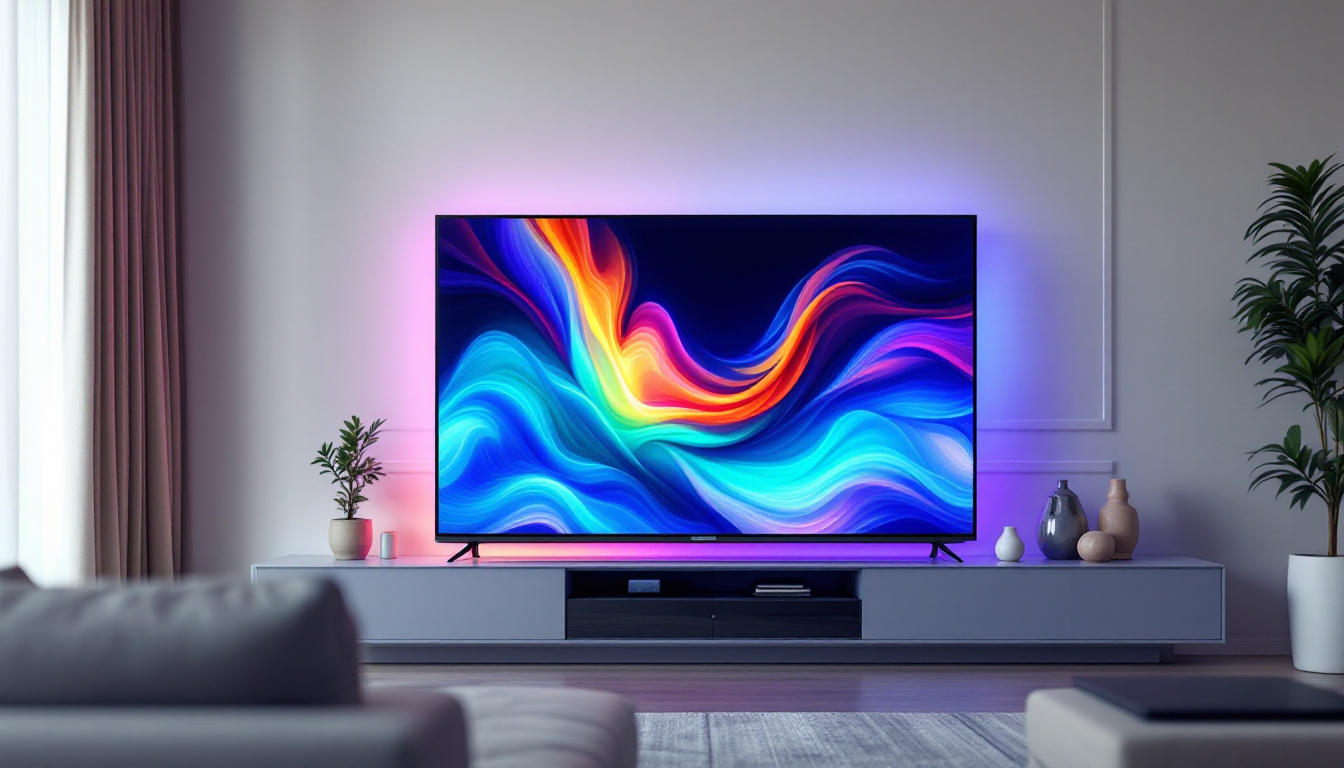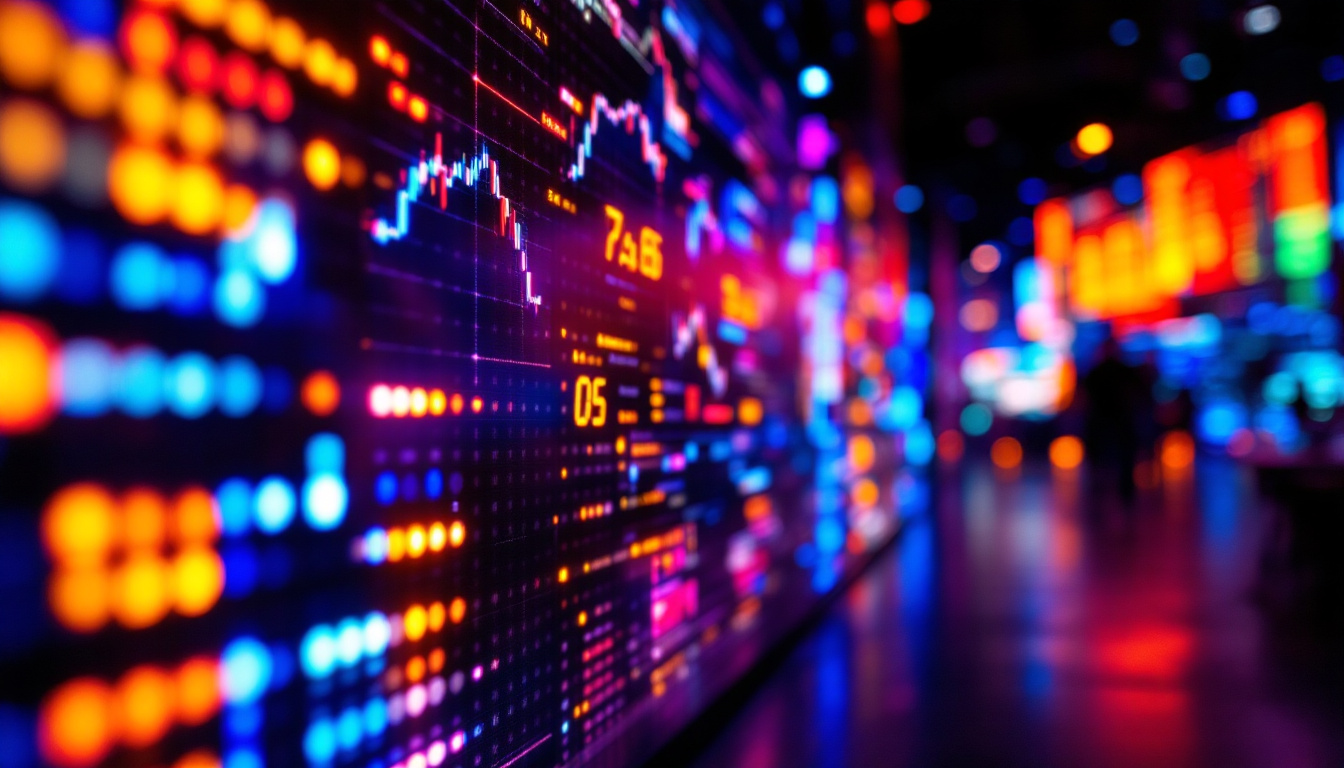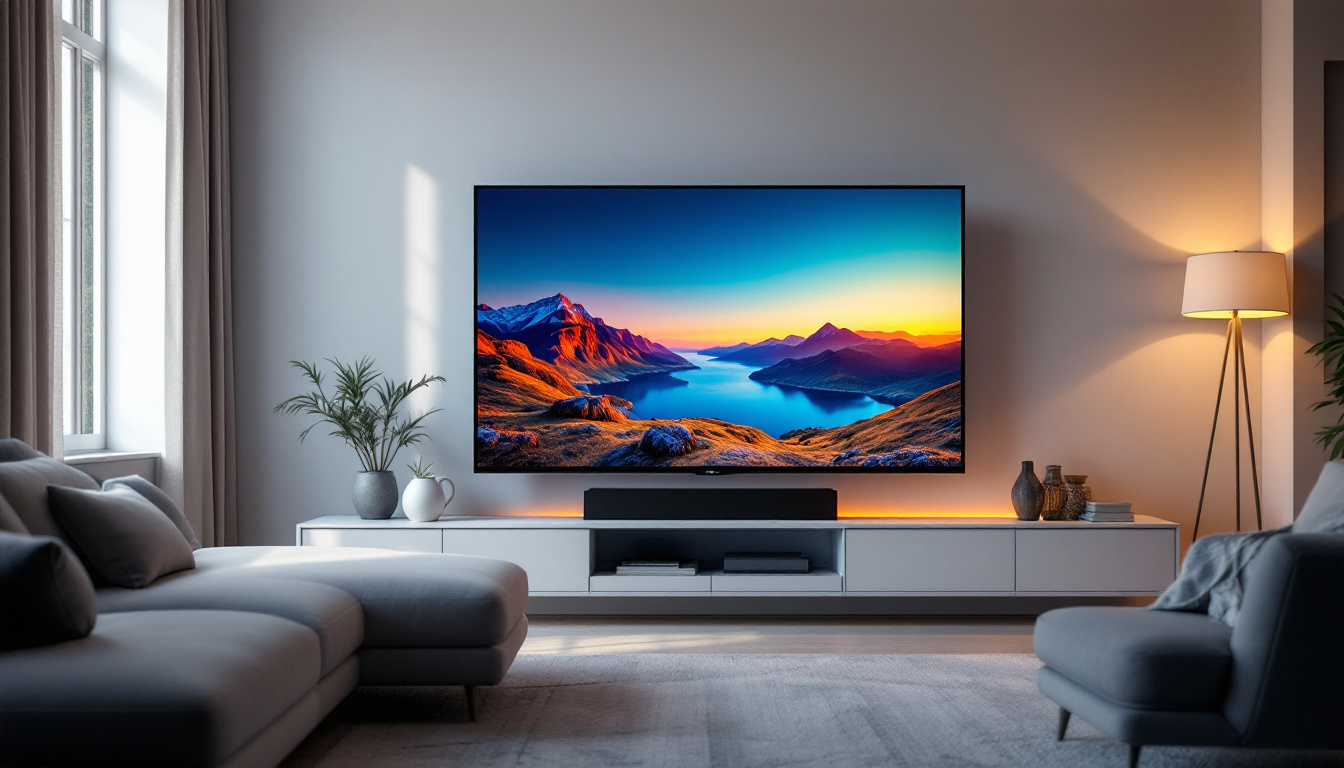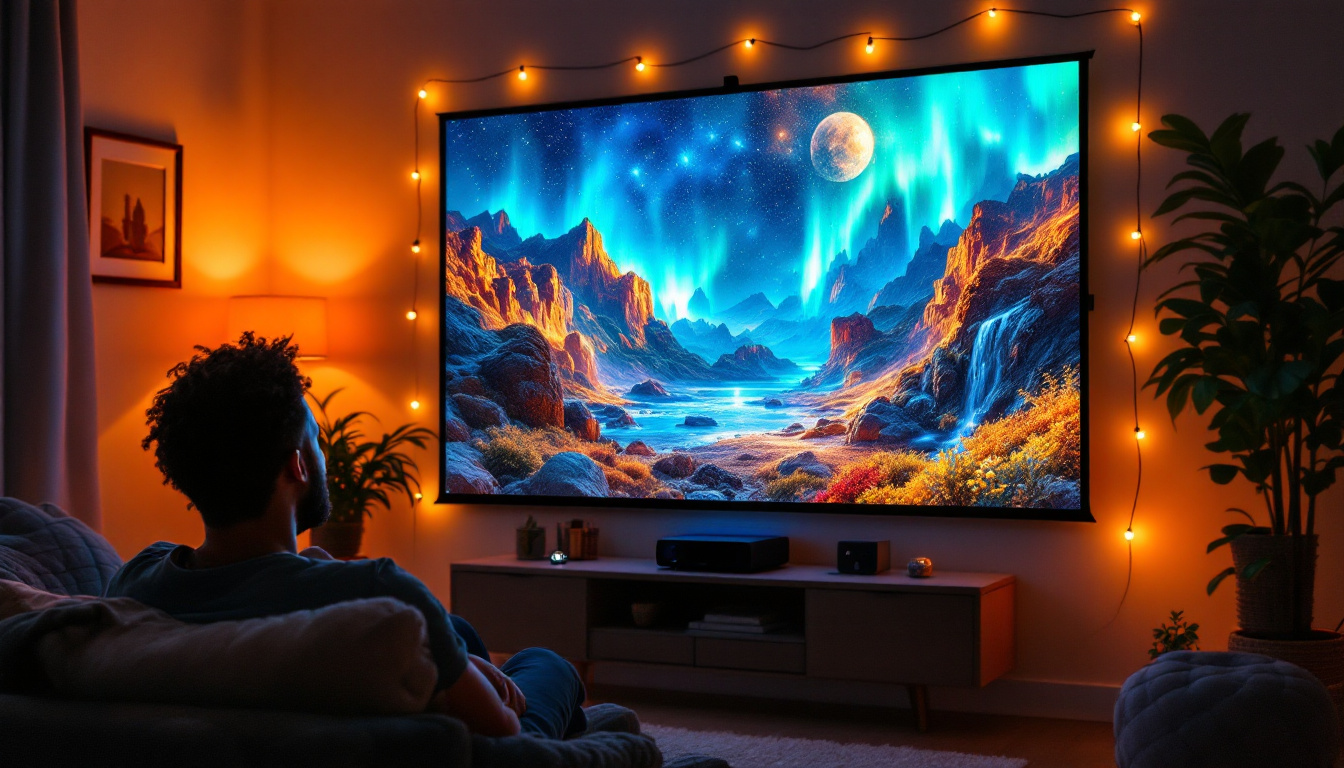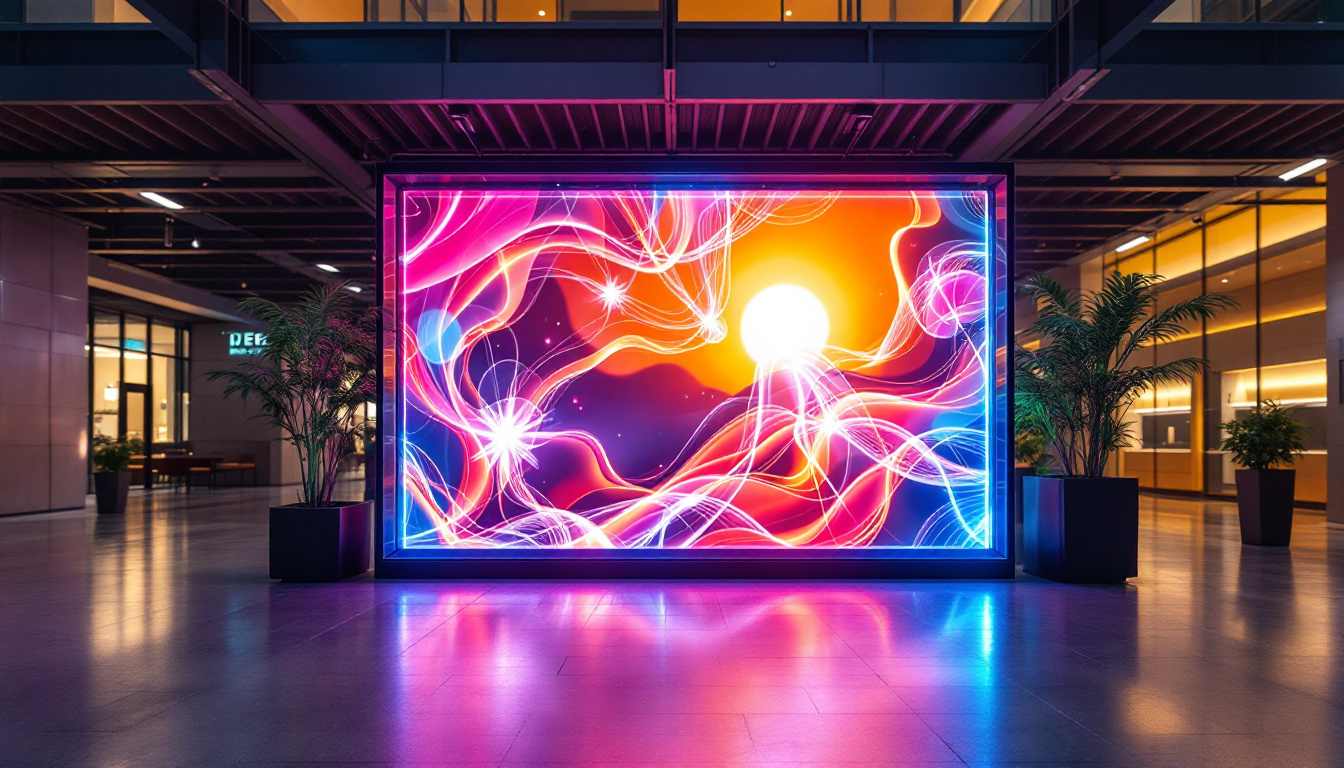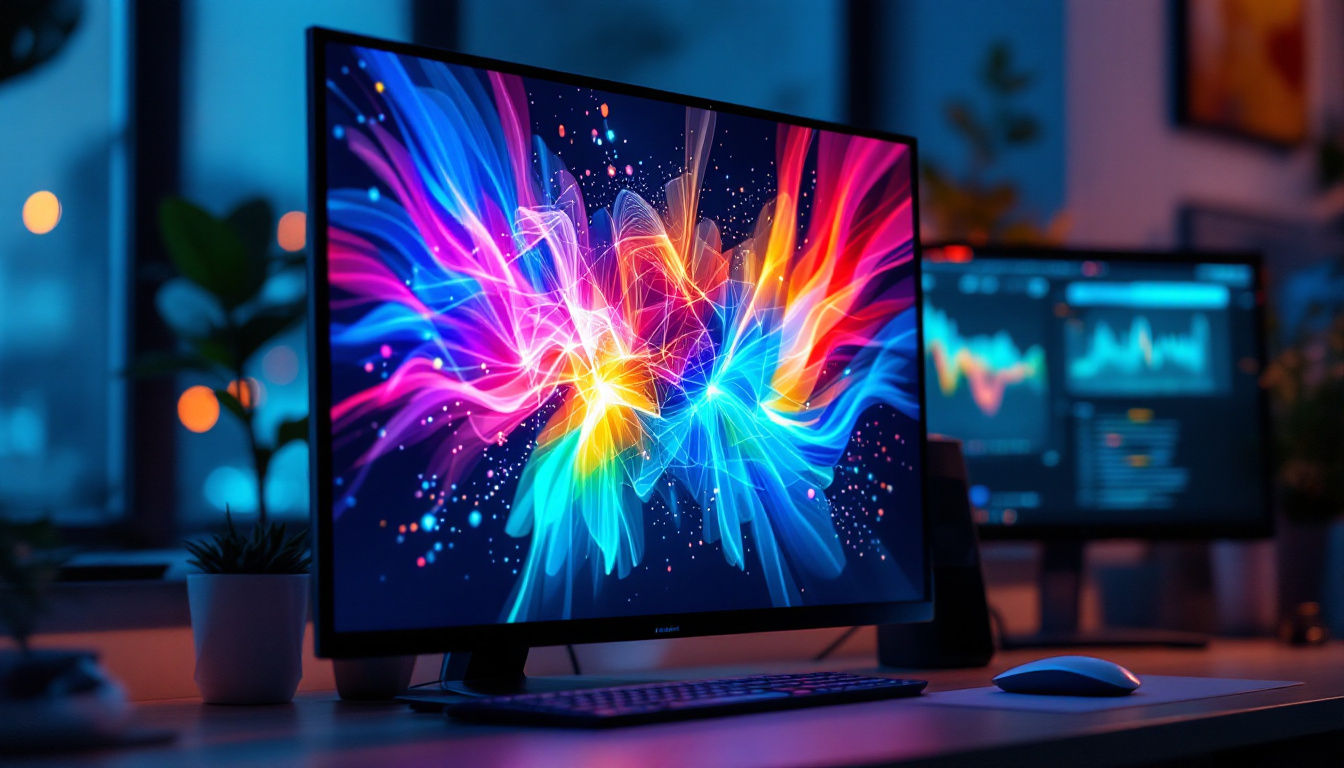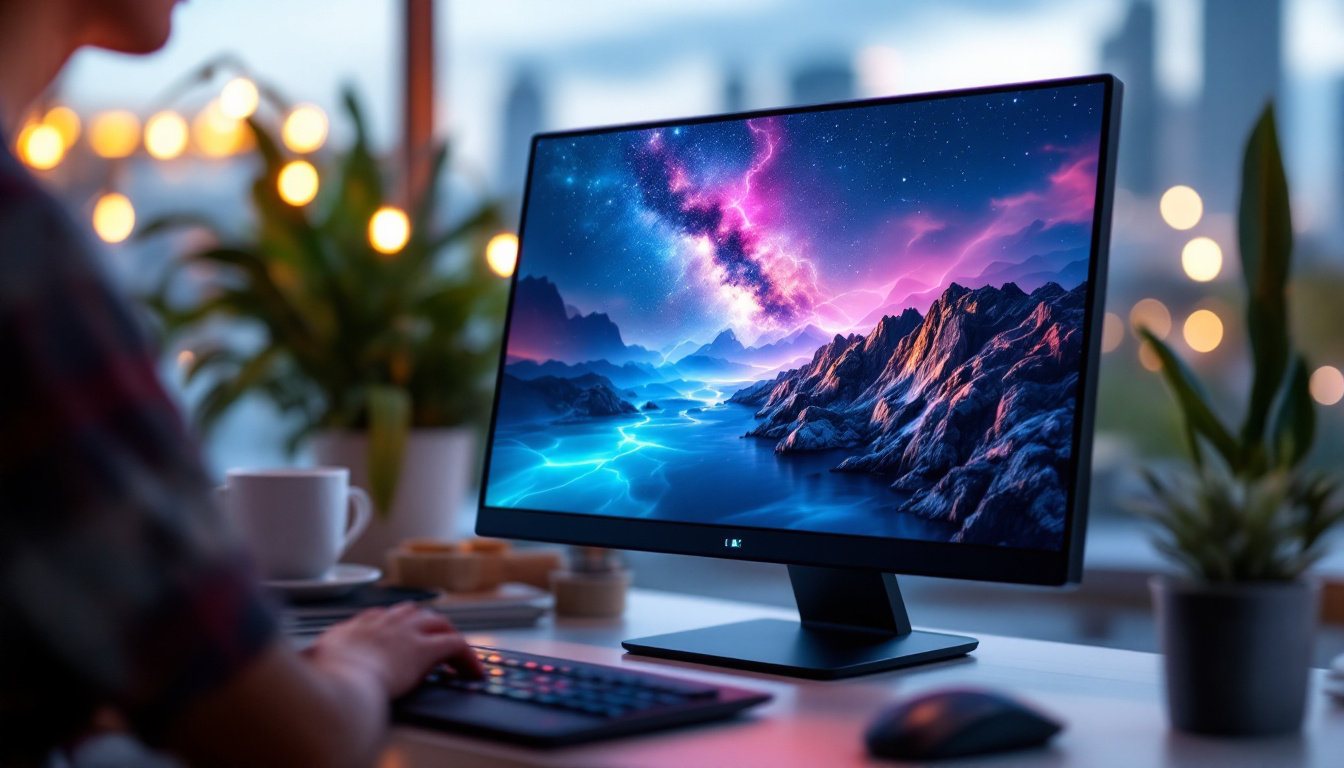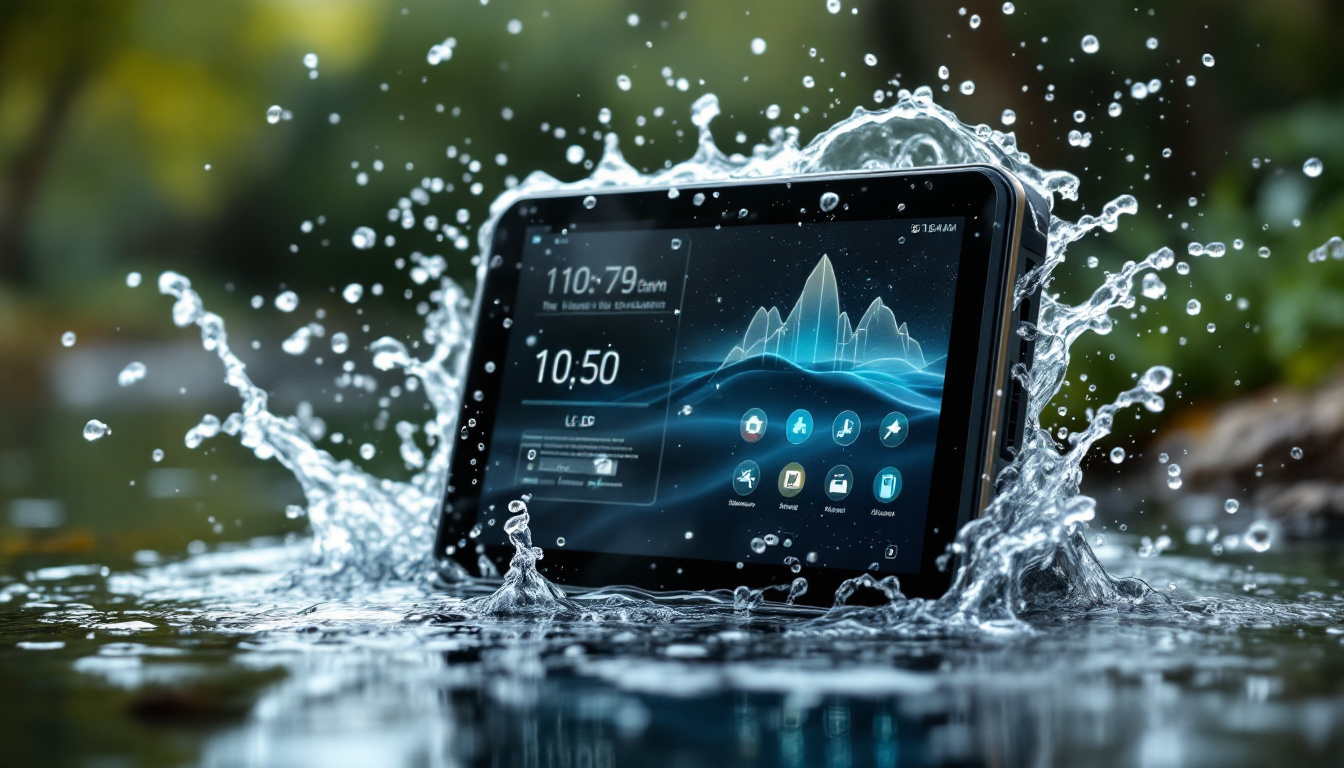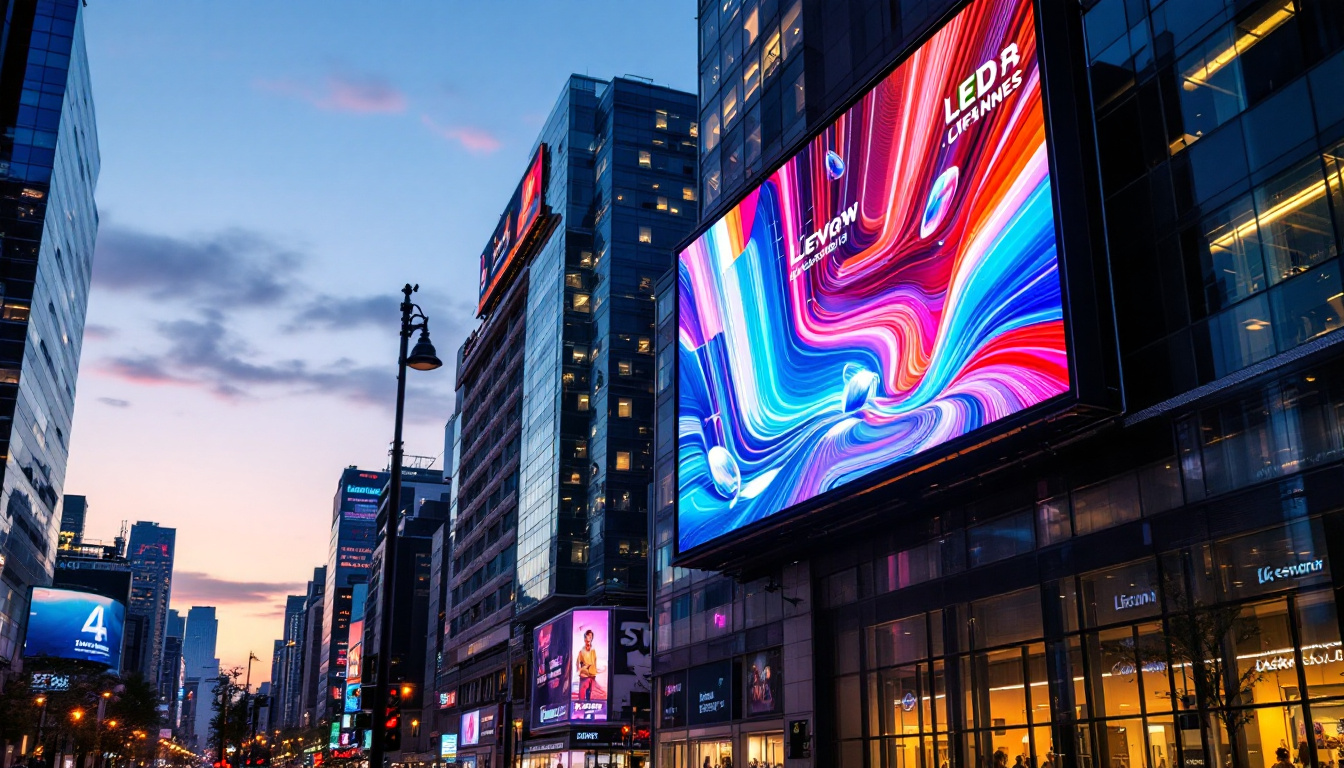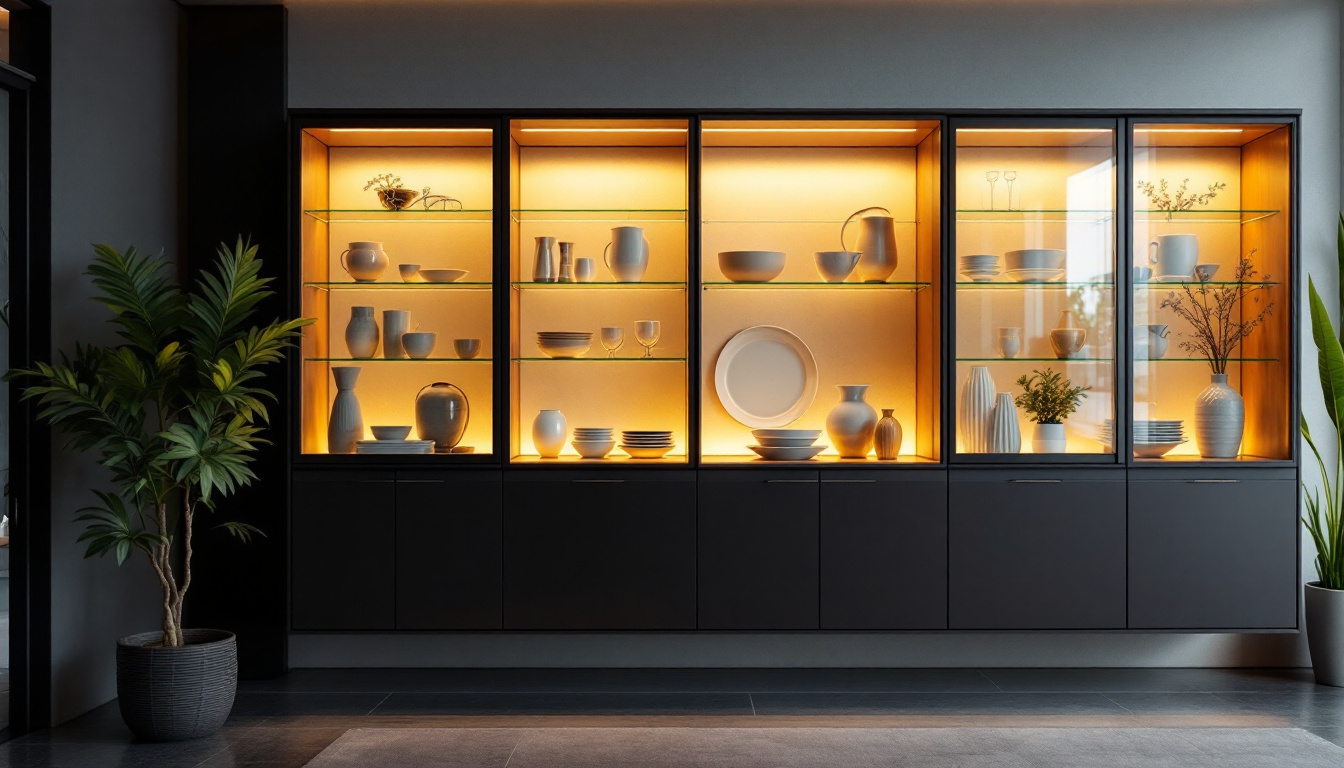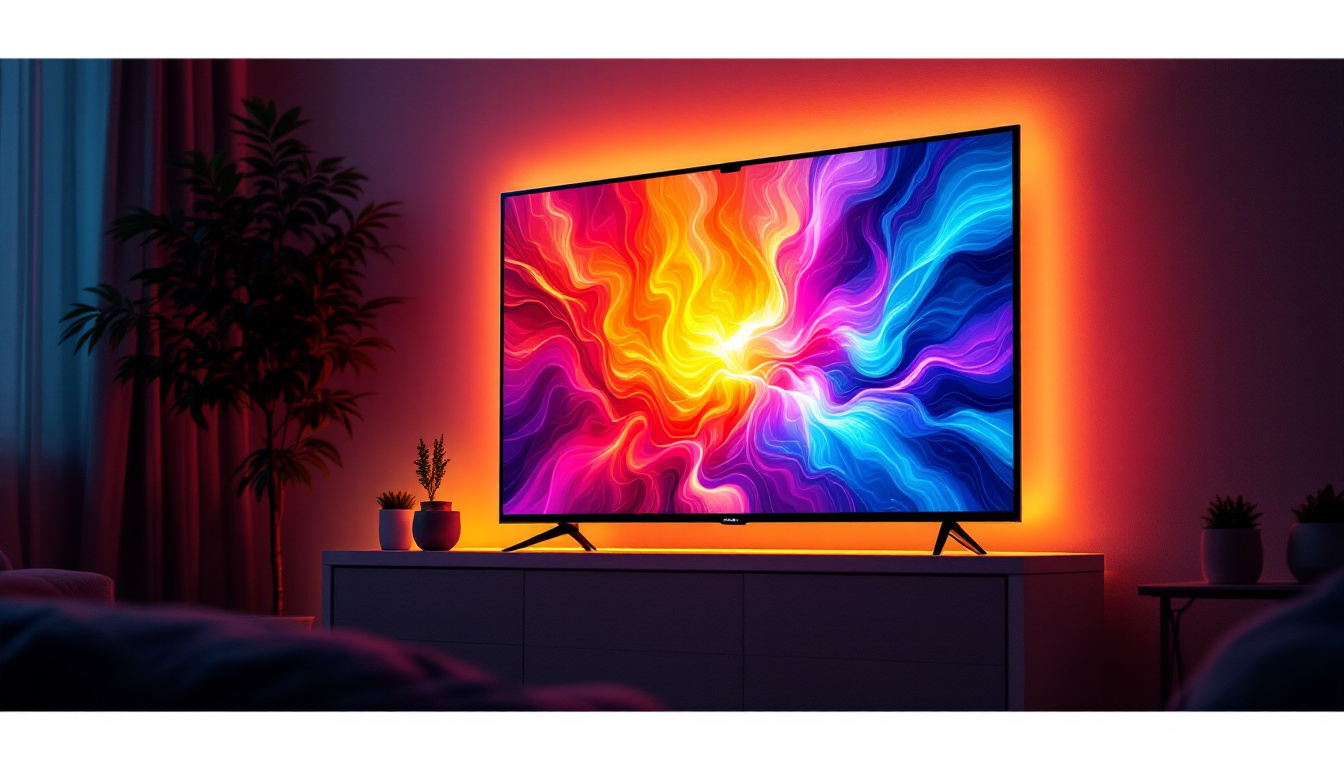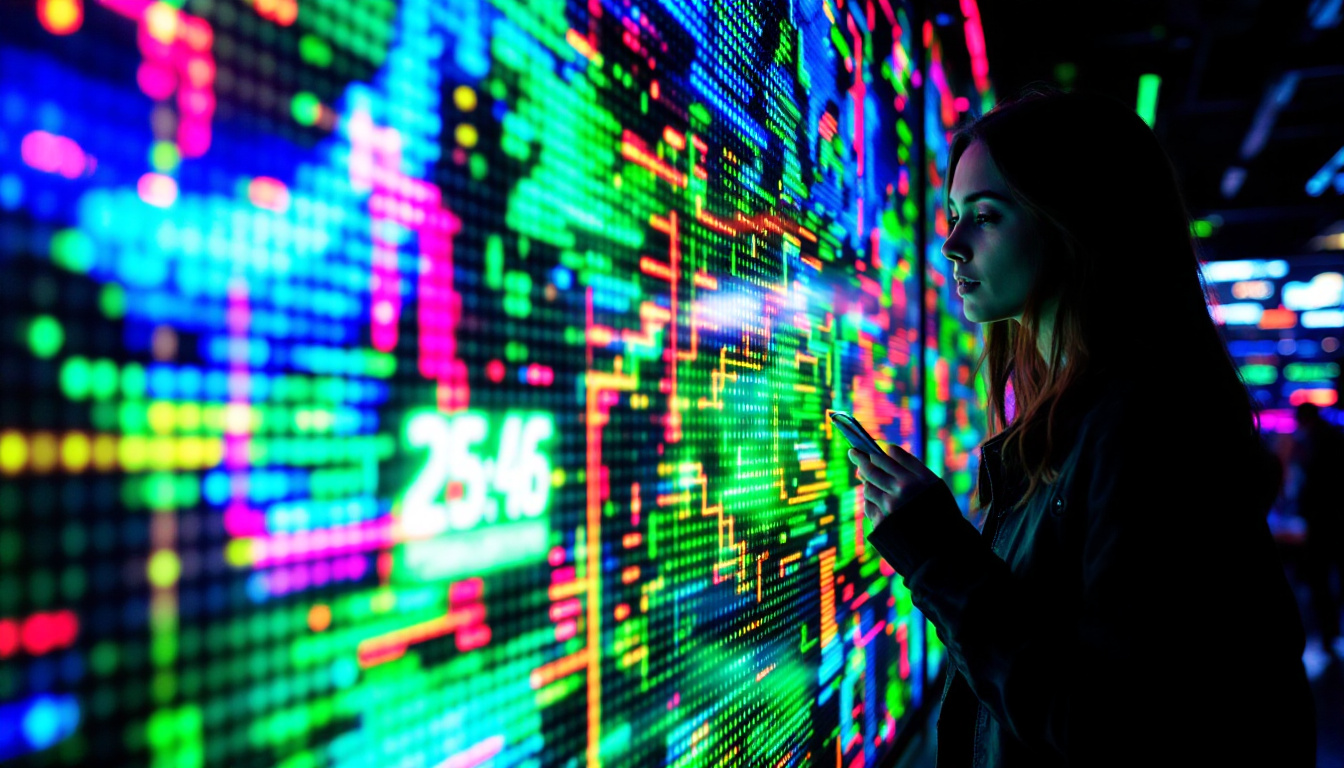Light TV For Wall: LED Display Explained
In today’s fast-paced digital world, the way we consume media has evolved dramatically. One of the most significant advancements in this area is the development of LED displays, particularly those designed for wall mounting. These displays, often referred to as “light TVs,” offer a sleek and modern solution for both home and commercial environments. This article delves into the intricacies of LED displays, exploring their technology, advantages, and applications.
Understanding LED Technology
LED, or Light Emitting Diode, technology has transformed the landscape of visual displays. Unlike traditional LCD screens that rely on backlighting, LED displays utilize individual diodes to produce light, resulting in brighter images and enhanced color accuracy. This innovation has not only improved the quality of visuals but has also paved the way for new applications in various industries, including advertising, entertainment, and even healthcare.
How LED Displays Work
At the core of LED technology is the semiconductor material that emits light when an electric current passes through it. This process allows for precise control over brightness and color, enabling the creation of vibrant images. LED displays can be categorized into two main types: direct view and backlit. Direct view LED displays consist of individual pixels made up of multiple diodes, while backlit LED displays use a grid of LEDs behind an LCD panel to enhance brightness. The technology behind these displays has evolved rapidly, with advancements in color mixing and dimming techniques that further enhance the viewing experience.
The arrangement of these diodes also plays a crucial role in the display’s overall performance. For instance, a higher pixel density results in sharper images, making LED displays ideal for applications requiring high-resolution visuals. Furthermore, the ability to control each diode independently allows for dynamic content, such as video playback and animations, which can captivate audiences in settings like concerts or sporting events.
Benefits of LED Displays
LED displays offer numerous advantages over traditional display technologies. One of the most notable benefits is energy efficiency. LED technology consumes significantly less power than older technologies, making it an environmentally friendly choice. Additionally, LED displays have a longer lifespan, often lasting over 50,000 hours, which reduces the need for frequent replacements. This longevity not only saves costs in the long run but also minimizes waste, contributing to a more sustainable approach to technology.
Another key advantage is their versatility. LED displays can be manufactured in various sizes and shapes, allowing for creative installations that fit any space. Whether it’s a large video wall in a corporate setting or a sleek television mounted in a living room, LED displays can cater to diverse aesthetic preferences and functional requirements. Moreover, advancements in flexible LED technology have opened up new possibilities, enabling displays to be curved or even integrated into architectural elements, further expanding their potential applications in modern design.
Applications of LED Displays
LED displays have found their way into various sectors, revolutionizing how information is presented and consumed. Their adaptability makes them suitable for a wide range of applications, from advertising to entertainment.
Commercial Use
In the commercial sector, LED displays are widely used for advertising and branding. Retailers often employ large LED screens to showcase promotions, new products, or engaging content that captures the attention of passersby. These displays can be programmed to change content dynamically, ensuring that the information remains fresh and relevant.
Moreover, LED displays are increasingly being utilized in corporate environments for presentations and meetings. Their high brightness and clarity make them ideal for large conference rooms, where visibility from different angles is essential. The ability to connect multiple displays allows for seamless presentations that can enhance collaboration and communication. Additionally, LED displays are often used in digital signage, providing real-time information such as stock prices, weather updates, and news headlines, which can be particularly beneficial in high-traffic areas like airports and train stations.
Residential Use
In residential settings, LED displays have become a popular choice for home entertainment systems. With the rise of streaming services and high-definition content, consumers are seeking displays that can deliver superior picture quality. LED TVs offer vibrant colors, deep blacks, and excellent contrast ratios, making them perfect for movie nights and gaming sessions.
Furthermore, many homeowners are opting for wall-mounted LED displays to save space and create a modern aesthetic. These displays can be integrated with smart home systems, allowing users to control them through voice commands or mobile apps, adding convenience to the viewing experience. Beyond entertainment, LED displays are also being used in smart kitchens, where they can serve as recipe guides, display cooking videos, or even function as a digital photo frame when not in use. This multifunctionality enhances the overall utility of LED technology in everyday life, making it an integral part of contemporary home design.
Choosing the Right LED Display
Selecting the appropriate LED display for a specific application can be a daunting task, given the variety of options available. Several factors should be considered to ensure the chosen display meets the intended purpose and environment.
Size and Resolution
The size of the LED display is one of the first considerations. A larger display may be necessary for expansive spaces, while smaller screens may suffice for intimate settings. Additionally, resolution plays a crucial role in image quality. Higher resolutions, such as 4K or even 8K, provide sharper images and finer details, making them ideal for applications where clarity is paramount. For instance, in a retail environment, a high-resolution display can attract customers by showcasing vibrant product images, while in a conference room, a larger screen with high resolution ensures that all attendees can clearly see presentations from any angle.
Brightness and Viewing Distance
Brightness is another critical factor to consider, especially for displays intended for outdoor use or brightly lit environments. The brightness of an LED display is measured in nits; higher values indicate better performance in challenging lighting conditions. Furthermore, the viewing distance should also be taken into account. Displays intended for close viewing should have a higher pixel density to maintain image clarity. For example, a display used in a control room might require a pixel pitch of less than 2mm to ensure that operators can read detailed information without straining their eyes. Conversely, a display in a stadium can afford a larger pixel pitch since viewers will be seated further away, allowing for a more cost-effective solution without sacrificing visibility.
Color Accuracy and Calibration
Another essential aspect to consider is color accuracy, which can significantly impact the effectiveness of the display. Displays that offer a wider color gamut can reproduce more vibrant and lifelike colors, making them particularly suitable for applications in advertising, broadcasting, or any field where visual fidelity is crucial. Regular calibration is also necessary to maintain color consistency over time, especially in environments where displays are subjected to varying lighting conditions. This ensures that the colors remain true to the original content, which is vital for brand representation and customer engagement.
Durability and Maintenance
Durability is a key consideration, particularly for outdoor LED displays that must withstand the elements. Factors such as weather resistance, dust and moisture protection, and robust construction materials can prolong the lifespan of the display and reduce maintenance costs. Additionally, ease of maintenance should not be overlooked; displays that are designed for quick repairs or component replacements can minimize downtime and keep operations running smoothly. Some manufacturers even offer modular designs, allowing for individual panel replacements without the need to dismantle the entire display, which can be a significant advantage in high-traffic areas.
Installation and Maintenance
Proper installation and maintenance of LED displays are essential to ensure optimal performance and longevity. Depending on the type of display, installation may require professional assistance, particularly for larger or more complex setups.
Installation Considerations
When installing an LED display, it is vital to consider factors such as wall structure, power supply, and cable management. Wall-mounted displays should be securely anchored to prevent accidents, and adequate ventilation must be ensured to avoid overheating. Additionally, the positioning of the display should maximize visibility while minimizing glare from windows or other light sources.
Regular Maintenance
Maintaining an LED display involves regular cleaning and software updates. Dust and dirt can accumulate on the screen, affecting image quality. Using a microfiber cloth and appropriate cleaning solutions can help keep the display in pristine condition. Furthermore, manufacturers often release firmware updates that can enhance performance and introduce new features, making it essential to stay informed and apply updates as needed.
The Future of LED Displays
The future of LED displays looks promising, with continuous advancements in technology paving the way for even more innovative applications. Emerging trends such as MicroLED and OLED technology are set to revolutionize the industry further.
MicroLED Technology
MicroLED technology represents a significant leap forward in display technology. Unlike traditional LED displays, MicroLEDs consist of microscopic individual LEDs that can create their own light. This results in displays that offer exceptional brightness, contrast, and color accuracy, with the potential for even thinner and more flexible designs.
MicroLED displays are expected to find applications in various fields, including virtual reality, augmented reality, and high-end televisions, providing users with immersive experiences that were previously unattainable.
OLED vs. LED
While LED displays have dominated the market, OLED (Organic Light Emitting Diode) technology is gaining traction due to its superior color reproduction and contrast ratios. OLED displays can achieve true blacks, as each pixel can be turned off individually. However, LED displays still hold advantages in terms of brightness and longevity, making them a popular choice for many consumers.
Conclusion
As technology continues to evolve, LED displays remain at the forefront of visual innovation. Their versatility, energy efficiency, and superior performance make them an ideal choice for a wide range of applications, from commercial advertising to home entertainment. By understanding the intricacies of LED technology and considering key factors when selecting a display, consumers and businesses alike can make informed decisions that enhance their viewing experiences.
In the coming years, as new technologies emerge and existing ones improve, LED displays will undoubtedly continue to shape the way we interact with visual media. Whether for personal enjoyment or professional use, investing in a high-quality LED display is a step towards embracing the future of entertainment.
Discover LumenMatrix LED Display Solutions
Ready to elevate your visual experience with the latest in LED technology? Look no further than LumenMatrix, a pioneer in crafting immersive LED display modules tailored for any setting. From the dynamic Indoor LED Wall Display to the robust Outdoor LED Wall Display, and from the mobile versatility of Vehicle LED Displays to the innovative LED Transparent Display, LumenMatrix offers a comprehensive range of solutions designed to captivate and engage. Embrace the future of visual communication and check out LumenMatrix LED Display Solutions today to transform your space with unparalleled clarity and impact.

